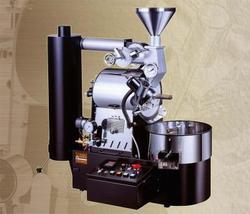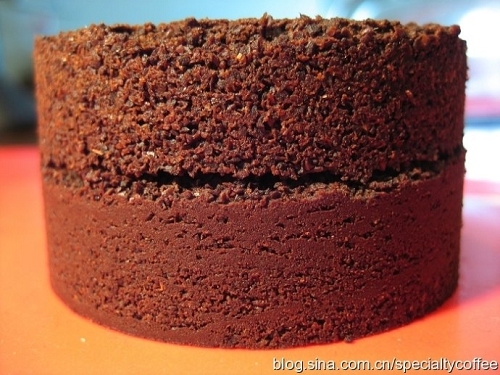Cup Test of Columbia Rosa Coffee the annoying flavor characteristics and taste of the world's top coffee beans
Geisha is an Arabica coffee variety from Geisha Mountain in southwestern Ethiopia, which is transliterated as "Rose Summer". Because the Japanese pronunciation of "geisha" is similar to Geisha, Geisha is called "Geisha" coffee in Japan. I think it is easier to communicate with foreign countries by transliteration of "Rose Summer" in Chinese.
According to the Panamanian Emerald Manor website, "Rose Summer" coffee seeds were taken from Geisha Mountain (Mount Rosa) in southwestern Ethiopia in 1931, transplanted to Kenya in 1931, replanted in Tanzania in 1936 and introduced to Costa Rica in 1953. It is unknown when they will be introduced to Jaramillo Manor in Panama. After the Price Peterson family, who only knew the Emerald Farm (Hacienda La Esmeralda) of Panama, bought the Galamie Manor in 1996, they found that the coffee flavor on the edge of the estate was unique, so they took part in the 2004 Panama "COE" competition, never wanted to become famous, and won awards almost every year since. Later, it was identified that the variety originated from Ethiopia's "Rose Summer Mountain", so it was called "Rose Summer" coffee. Panamanian Gesha coffee sold for a sky-high price of nearly $290 per kilogram.
The Herrera family of Hope Farm in Colombia introduced Rosa coffee from the Emerald Manor of Panama in 2007. Although it failed at first, after years of hard work, it won the first prize in the American Fine Coffee Association's Annual Bean Competition (COTY-Coffees of the Year) in Houston in April 2011.
David Piza C, who majored in industrial engineering from the University of Los Angeles at Bogota, is a professional coffee cup tester and judge of the barista competition in Colombia. When he came to China in August this year, he brought a variety of high-quality manor boutique coffee, including Geisha of Colombia. The author bakes the coffee according to the raw bean information provided by Pei Daxing and the expected baking curve in his mind. To the surprise of everyone present, compared with the samples brought by Pei Daxing, the Gesha baked by the author can hardly be seen with the naked eye. Although Pei Daxing did not take out the samples they had been thinking about baking in Colombia before the author baked, coincidences often happen.
Colombian "Gaisha" coffee:
On the third day after baking, the author, together with Pei Daxing and two friends, tested the Colombian rosy summer coffee in Wangjing, Beijing. There are three types of coffee: one is a sample of Rosa Coffee baked in Colombia, and the other two are two batches of Colombian Rosa Coffee baked by the author in Beijing, each with three cups and the standard of SCAA is 5 cups.
Grind into coffee particles:
Smell the incense after breaking the residue:
To remove the scum:
Begin to taste:
Record at any time:
Summing up the test records of the four cups, it is concluded that the first place is the same batch of rose summer baked by the author in Beijing and baked in Colombia.
Colombian Rosa Coffee made by hand after the cup test:
Colombian Rosa Coffee features lively, bright and varied acidity, rich aromas of flowers and fruit, medium thickness, balanced and supple taste and a long, sweet finish.
Source:
Huang Wei's blog of roasting boutique coffee
Important Notice :
前街咖啡 FrontStreet Coffee has moved to new addredd:
FrontStreet Coffee Address: 315,Donghua East Road,GuangZhou
Tel:020 38364473
- Prev

Afterburner system of coffee roaster burner gas supply system diagram of coffee roaster knowledge of coffee roaster
Post-burner system, also known as direct-fired thermal oxidizer system. Direct-fired thermal oxidizer or post-burner is the simplest kind of thermal oxidizer, which can greatly reduce VOC emissions by instantly cremating soot or carbide ions into clean water vapor at a high temperature of about 500C. This kind of thermal oxidizer does not carry any heat recovery equipment and cannot recycle the heat generated in the combustion process. Typical
- Next

Coffee brewing method Philharmonic pressure method Coffee Philharmonic pressure positive and negative pressure is what coffee making video
AeroPress is a brand-new coffee making appliance launched by AEROBIE in 2006. Alan Adler, its inventor, is a mechanical engineering lecturer at Stanford University in the United States. He has more than 40 patents in the United States and other countries. Aile press is easy to use. Put coffee granules in the press barrel, soak in water for 10 seconds, gently and slowly press the press rod within 20 seconds,
Related
- Beginners will see the "Coffee pull flower" guide!
- What is the difference between ice blog purified milk and ordinary milk coffee?
- Why is the Philippines the largest producer of crops in Liberia?
- For coffee extraction, should the fine powder be retained?
- How does extracted espresso fill pressed powder? How much strength does it take to press the powder?
- How to make jasmine cold extract coffee? Is the jasmine + latte good?
- Will this little toy really make the coffee taste better? How does Lily Drip affect coffee extraction?
- Will the action of slapping the filter cup also affect coffee extraction?
- What's the difference between powder-to-water ratio and powder-to-liquid ratio?
- What is the Ethiopian local species? What does it have to do with Heirloom native species?

